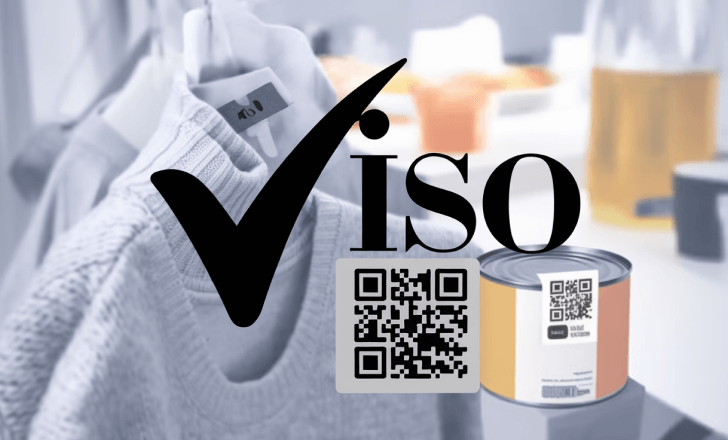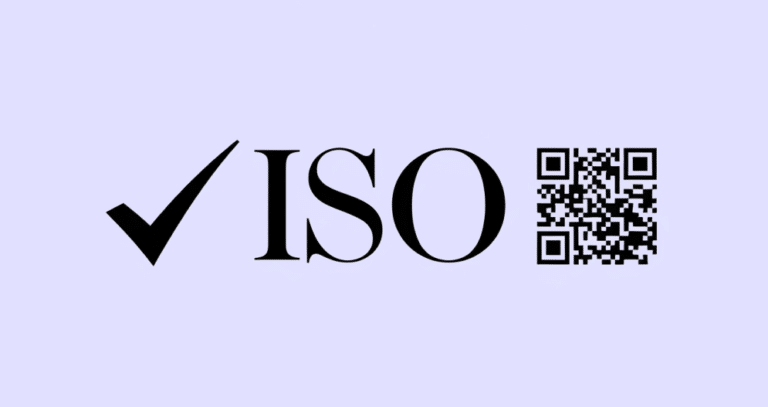In the world of data capture, precision isn’t optional—it’s the foundation of trust. That’s especially true with quick response codes (QR codes), which now power everything from product authentication to mobile marketing. As QR codes become more deeply embedded in business workflows, standardization isn’t just helpful—it’s critical.
That’s why at QR Code KIT, we don’t cut corners. We follow ISO quality standards for QR codes to the letter, delivering reliable, high-quality QR code solutions that meet global compliance benchmarks. You’ll see our certification badges right in our website footer—a clear signal to our clients that we take international standards seriously, not just in theory but in daily practice.
What is the ISO standard for QR codes?
The backbone of every legitimate QR code is ISO/IEC 18004—the international standard that officially defines the QR code format. Originally developed by Denso Wave, QR codes belong to the broader “QR code family” and are now globally recognized under this specification.
ISO/IEC 18004 details everything that makes a QR code work: its symbology characteristics, data character encoding methods, reference decoding algorithm, and key dimensional characteristics. At QR Code KIT, we don’t treat these as background noise—we treat them as non-negotiables. Every QR code we generate is built to align with this standard, ensuring consistency, compliance, and performance at every scan.
Understanding QR code standards
While ISO/IEC 18004 sets the foundation for the QR code format, the story doesn’t end there. As the uses for QR codes have expanded, so have the standards that govern them. Today, there’s a range of formats tailored to different needs—from micro QR codes designed for a small to moderate amount of data in compact spaces, to enhanced forms built for robust automatic identification and data capture.
The QR code format differs depending on the environment, data volume, and the application it’s meant for. That’s why at QR Code KIT, we don’t take a one-size-fits-all approach. We offer a full suite of QR code types that meet international standards, ensuring our customers get high-quality results—whether they need a tiny symbol for packaging or a large one for signage.
ISO quality standards and QR code grading
Not all QR codes are created equal—and ISO standards make sure of that. The ISO grading system evaluates the production quality requirements of each code, looking closely at critical features like alignment patterns, mirror image orientation, and error correction rules. These technical details aren’t just theoretical—they’re what keep QR codes scannable in the real world, whether they’re printed on dark backgrounds, uneven surfaces, or in low-light conditions.
Grading also takes into account reflectance reversal, symbol size, and the clarity of finder patterns. From “light symbols” on dark backgrounds to the more traditional dark-on-white contrast, each element plays a role in how well a QR code performs once it’s out in the wild.

Why ISO standards matter for QR codes
When it comes to QR codes, precision isn’t a bonus—it’s a must. ISO standards lay out exactly what’s needed to produce high-quality, reliable codes, especially in industries where data capture and accuracy can’t be left to chance.
These standards cover everything from symbol formats and overhead modules to enhanced forms and specific data capture techniques. They define a restricted range of parameters that ensure QR codes scan smoothly, regardless of where or how they’re used.
At QR Code KIT, we follow these international standards to the letter. That commitment helps our clients feel confident knowing that every code we generate meets strict, verified benchmarks for performance, interoperability, and reliability.
The ISO standard for barcodes and QR codes: ISO/IEC 18004:2024
QR codes are more than just a digital shortcut—they’re a type of 2D barcode governed by strict international standards. ISO/IEC 18004:2024 is the latest edition that sets the bar for how QR codes should be produced, specifying everything from symbology characteristics and dimensional traits to data encoding methods and error correction rules.
This standard ensures that QR codes are not only scannable, but reliable and consistent across countless applications. At QR Code KIT, we fully comply with ISO/IEC 18004:2024—alongside broader standards like ISO 9001, ISO 27001, and ISO 14001. It’s our way of showing our commitment to quality, data security, and environmental responsibility in everything we do.

Key elements of ISO/IEC 18004
The ISO/IEC 18004 standard defines what makes a QR code accurate, scannable, and reliable. Here are the essentials:
Symbology characteristics
Specifies the shape and pattern that form the QR code symbology, ensuring consistent data capture.
Data encoding
Outlines how different types of data—text, numbers, or links—are encoded for accurate retrieval.
Data capture techniques
Covers automatic identification and data capture methods used in high-performance applications.
Finder and alignment patterns
These patterns help scanners locate and decode the QR code correctly, even if it’s tilted or printed on uneven surfaces.
These components are especially critical for high-density formats like micro QR codes, where every pixel matters.
Differences within the QR code family
While QR codes have become the standard for data capture, the “QR code family” also includes related formats, such as micro QR codes, which are suitable for smaller applications with a restricted range of data. These smaller symbols, with a reduced number of overhead modules, enable small applications to benefit from QR technology without compromising space. Micro QR codes are ideal for situations with a narrow area available, providing an enhanced form of data encoding while still meeting international standards.
QR code grading and verification
Creating high-quality QR codes isn’t just about generating a graphic—it’s about making sure it works in the real world. That’s where barcode verifiers come in. These tools check each code against ISO/IEC 18004 grading standards to catch potential issues before they reach your customers.
The verification process looks at key elements like dimensional characteristics, symbol size, light module placement, and overall data capture performance. It’s the final quality check that ensures every QR code scans quickly, accurately, and reliably—just as it should.
International standards for QR codes and barcodes
Standards like ISO/IEC 18004 are the global blueprint for producing and verifying QR codes and barcodes. As technology and data capture techniques evolve, so do these international standards—ensuring codes stay reliable in an ever-changing digital landscape.
The 2024 update to ISO/IEC 18004 reflects this progress, introducing new guidelines to support modern automatic identification and data capture needs. At QR Code KIT, we stay aligned with every update—so our clients always get QR codes built for what’s next.
Additional QR code specifications
Beyond ISO quality standards, QR codes can be tailored for specific use cases. Some are designed with a white background and dark modules for maximum readability, while others use reflectance reversal to match unique branding or design needs.
At QR Code KIT, we offer that kind of flexibility. Whether you need a standard layout or something more specialized, we help you choose the right QR code format to match your goals—without compromising scan quality.
Ensuring quality and compliance with QR Code KIT
When QR codes play a critical role in your business—whether it’s retail, logistics, healthcare, or manufacturing—there’s no room for error. Compliance with ISO standards isn’t just a checkbox; it’s a necessity.
At QR Code KIT, we go beyond meeting international standards—we aim for the highest production quality in every code we generate. You’ll find our ISO compliance badges right in our website footer, a clear reflection of our ongoing commitment to accuracy, reliability, and global best practices.

Meeting the demands of the modern QR code ecosystem
As data capture techniques evolve, QR code standards must keep pace. ISO standards are key to this progress—they define production quality requirements, ensure reliable scanning, and help QR codes perform under a wide range of real-world conditions.
At QR Code KIT, we’re built for that challenge. Our platform stays aligned with both the original QR code specifications and the latest updates, including ISO/IEC 18004:2024, so our customers always stay ahead.
In summary:
Adhering to ISO quality standards for QR codes isn’t optional—it’s what ensures your codes are reliable, accurate, and built to last. At QR Code KIT, we combine deep industry expertise with international compliance to deliver QR codes that are efficient, scalable, and ready for any application—from manufacturing floors to mobile campaigns.
If your organization is serious about quality and compliance, QR Code KIT is the solution you can trust.
